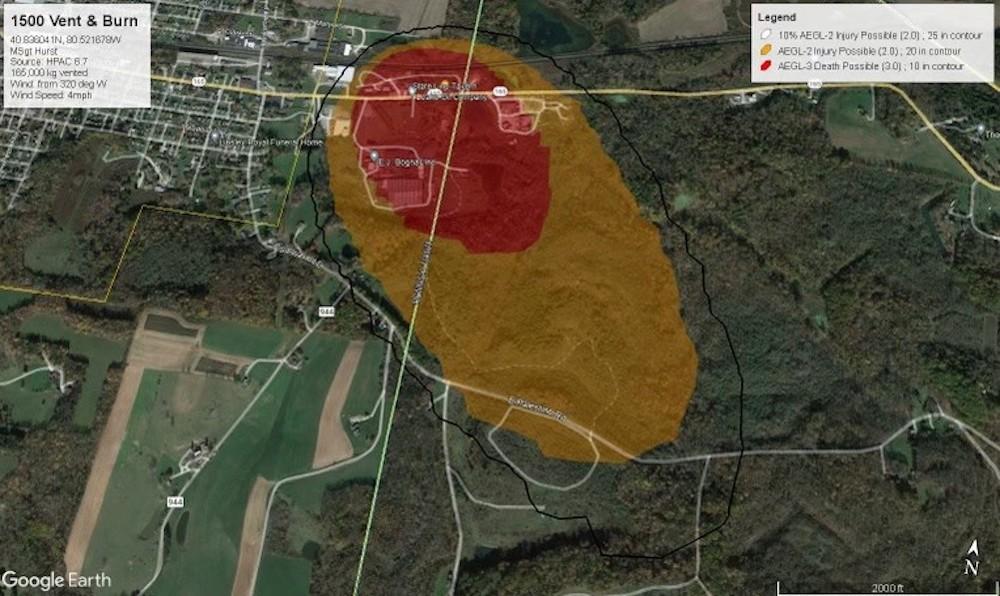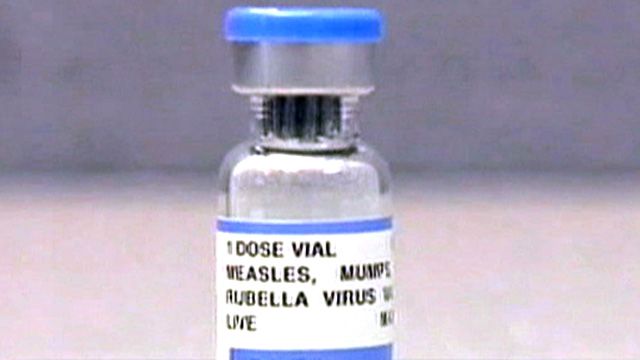Ohio Train Derailment: The Long-Term Impact Of Lingering Toxic Chemicals On Buildings

Table of Contents
Assessing the Extent of Chemical Contamination
The Ohio train derailment released a cocktail of hazardous substances, including vinyl chloride, butyl acrylate, and ethylhexyl acrylate, posing a significant threat to the surrounding environment and structures. These chemicals exhibit varying properties and potential impacts on building materials.
Types of Chemicals Involved
- Vinyl chloride: A known carcinogen, vinyl chloride is highly volatile and can easily spread through the air. Its corrosive nature can degrade metal components and react with other building materials.
- Butyl acrylate: This chemical is irritating to the skin, eyes, and respiratory system. Prolonged exposure can cause damage to various building materials through chemical reactions.
- Ethylhexyl acrylate: Similar to butyl acrylate, ethylhexyl acrylate poses respiratory and skin irritation risks and can degrade certain building materials over time.
Contamination Pathways
The spread of these chemicals occurred through multiple pathways:
- Airborne dispersion: The immediate release created an airborne plume, leading to surface deposition of chemicals on buildings, potentially impacting exterior paint, siding, and roofing materials.
- Groundwater contamination: Leaked chemicals infiltrated the soil, potentially contaminating groundwater sources that may be used for building foundations or water supplies.
- Soil contamination: Direct contact with the spilled chemicals contaminated the soil around the derailment site. This contaminated soil can directly affect building foundations and integrity.
Initial Assessment Challenges
Accurately assessing the extent of contamination immediately after the derailment proved challenging due to several factors:
- Limited access to the affected area: The immediate aftermath prioritized emergency response and evacuation, limiting access for comprehensive building assessments.
- Lack of comprehensive testing equipment: Sufficient resources and specialized equipment for widespread and detailed testing were not immediately available.
- Urgency of immediate health concerns: The pressing need to address immediate health concerns naturally overshadowed the long-term assessment of building damage.
Long-Term Effects on Building Materials
The lingering presence of toxic chemicals from the Ohio train derailment poses significant long-term risks to the structural integrity and habitability of buildings in the affected area.
Damage to Exterior Surfaces
Exposure to the released chemicals can cause various types of damage to building exteriors:
- Corrosion of metal siding: Vinyl chloride's corrosive properties can accelerate the corrosion of metal siding, leading to weakening and potential structural failure.
- Degradation of paint finishes: Chemical exposure can cause paint to peel, crack, and lose its protective properties, potentially leading to further damage to underlying materials.
- Damage to roofing materials: Exposure to chemicals can degrade roofing materials, reducing their lifespan and potentially leading to leaks and structural damage.
Impact on Interior Structures
The infiltration of toxic chemicals can also cause damage to interior building components:
- Chemical leaching into drywall: Chemicals might leach into drywall, potentially causing discoloration, weakening, and the release of harmful substances into the interior air.
- Degradation of insulation materials: Certain insulation materials may be susceptible to chemical degradation, reducing their effectiveness and potentially releasing harmful particles.
- Off-gassing of harmful chemicals within buildings: Some chemicals may off-gas within buildings, leading to poor indoor air quality and potential health risks to occupants.
Foundation and Structural Integrity
The long-term effects extend to the foundation and structural integrity of buildings:
- Chemical reaction with concrete foundations: Certain chemicals can react with concrete foundations, weakening their structural integrity over time.
- Weakening of structural steel members: Corrosion caused by chemical exposure can weaken structural steel members, compromising the building's overall stability.
- Ground instability due to soil contamination: Contaminated soil can lead to ground instability, potentially causing foundation settling or even structural collapse.
Remediation and Mitigation Strategies
Addressing the long-term impacts of the Ohio train derailment requires comprehensive remediation and mitigation strategies.
Cleaning and Decontamination Techniques
Various techniques can be employed to clean and decontaminate affected buildings:
- Specialized cleaning solutions: Specific cleaning solutions designed to neutralize or remove the particular chemicals involved may be necessary.
- Pressure washing: Pressure washing can remove surface contaminants, but careful consideration is required to avoid spreading contamination or damaging building materials.
- Surface replacement: Severely contaminated surfaces may require complete replacement to ensure thorough remediation.
Building Material Replacement
In many cases, replacing severely damaged building materials will be necessary:
- Replacement of contaminated drywall: Drywall absorbing significant amounts of chemicals should be replaced to prevent ongoing off-gassing and health risks.
- Repair or replacement of roofing systems: Damaged roofing systems need repair or replacement to prevent leaks and further structural damage.
- Foundation repair or replacement: Severe foundation damage may necessitate costly repairs or even complete foundation replacement.
Long-Term Monitoring
Ongoing monitoring is crucial to detect potential future problems:
- Air quality testing: Regular air quality testing can detect the presence of lingering volatile organic compounds.
- Water testing: Testing well water and other water sources can monitor for chemical contamination.
- Periodic building inspections: Regular inspections can identify any new signs of damage or deterioration.
Conclusion
The Ohio train derailment's long-term impact on buildings is significant and demands immediate attention. The lingering toxic chemicals pose substantial risks to structural integrity and human health. Comprehensive assessments are crucial to understand the full extent of contamination, and effective remediation strategies, including cleaning, decontamination, and material replacement, are necessary. Continued research, responsible remediation efforts, and proactive monitoring for lingering toxic chemicals are vital steps in safeguarding public health and protecting the structural integrity of affected properties. Addressing the long-term consequences of the Ohio train derailment and its lingering toxic chemicals on buildings is a shared responsibility, requiring collaboration between government agencies, environmental experts, and the affected community.

Featured Posts
-
 Full Trailer For Mission Impossible Dead Reckoning Part Two What We Know
Apr 26, 2025
Full Trailer For Mission Impossible Dead Reckoning Part Two What We Know
Apr 26, 2025 -
 Sunken Wwii Warship Reveals Well Preserved Car
Apr 26, 2025
Sunken Wwii Warship Reveals Well Preserved Car
Apr 26, 2025 -
 Deion Sanders Influence Shedeur Sanders Path To The Browns
Apr 26, 2025
Deion Sanders Influence Shedeur Sanders Path To The Browns
Apr 26, 2025 -
 Hollywood Nepotism A Thunderbolt Stars Candid Confession
Apr 26, 2025
Hollywood Nepotism A Thunderbolt Stars Candid Confession
Apr 26, 2025 -
 Cinema Con 2024 First Look At Mission Impossible Dead Reckoning Part Two Standee
Apr 26, 2025
Cinema Con 2024 First Look At Mission Impossible Dead Reckoning Part Two Standee
Apr 26, 2025
Latest Posts
-
 Is The Cdcs New Vaccine Study Compromised Concerns Over Misinformation Agent Hire
Apr 27, 2025
Is The Cdcs New Vaccine Study Compromised Concerns Over Misinformation Agent Hire
Apr 27, 2025 -
 Nbc Los Angeles Hhs Taps Anti Vaccine Activist To Review Debunked Autism Vaccine Claims
Apr 27, 2025
Nbc Los Angeles Hhs Taps Anti Vaccine Activist To Review Debunked Autism Vaccine Claims
Apr 27, 2025 -
 Hhs Appoints Anti Vaccine Activist To Review Autism Vaccine Link
Apr 27, 2025
Hhs Appoints Anti Vaccine Activist To Review Autism Vaccine Link
Apr 27, 2025 -
 The Cdcs Vaccine Study And The Problem Of Discredited Information
Apr 27, 2025
The Cdcs Vaccine Study And The Problem Of Discredited Information
Apr 27, 2025 -
 Hhs Under Fire Anti Vaccine Advocate Investigates Debunked Autism Vaccine Connection
Apr 27, 2025
Hhs Under Fire Anti Vaccine Advocate Investigates Debunked Autism Vaccine Connection
Apr 27, 2025
